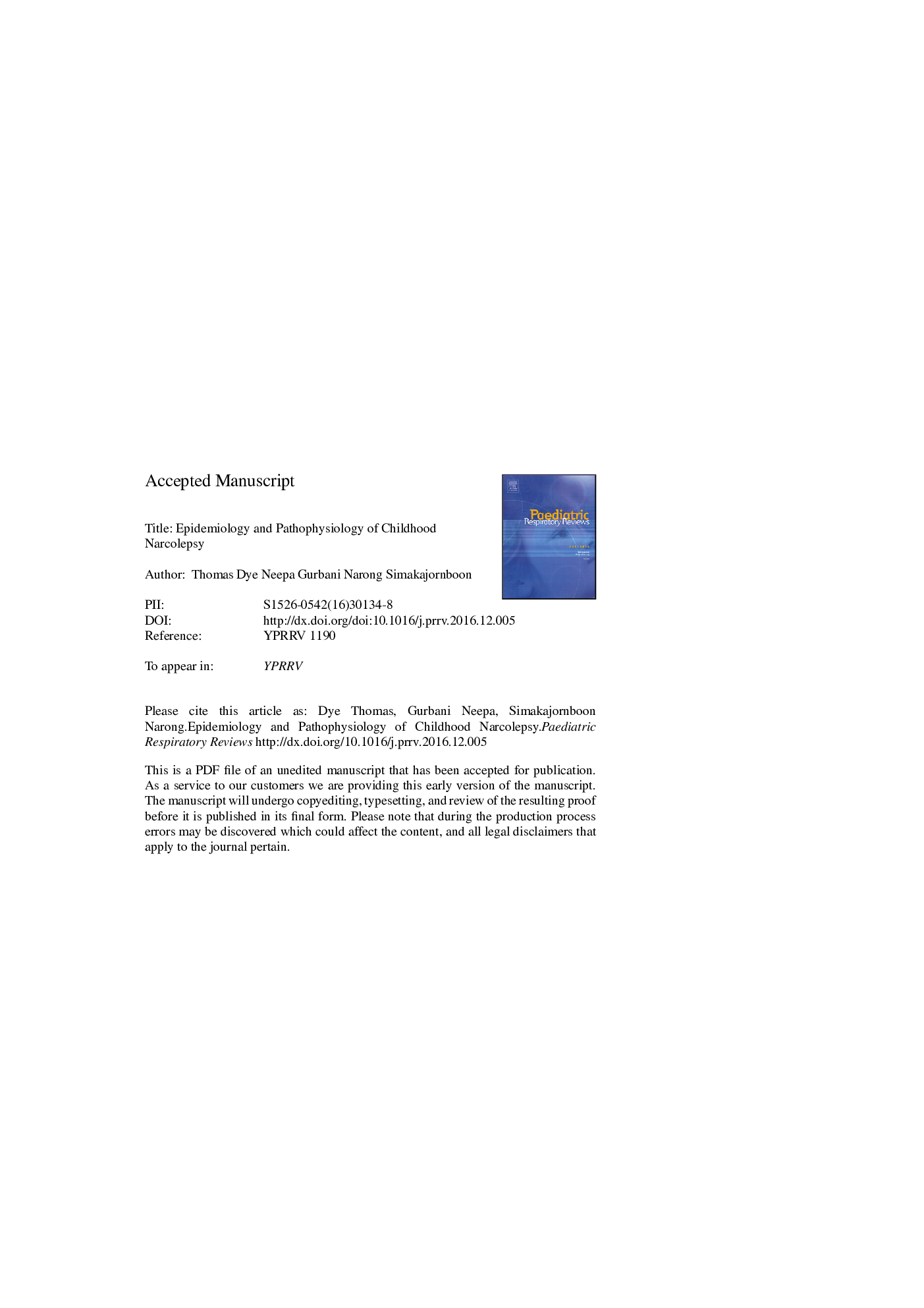| کد مقاله | کد نشریه | سال انتشار | مقاله انگلیسی | نسخه تمام متن |
|---|---|---|---|---|
| 8813031 | 1607675 | 2018 | 17 صفحه PDF | دانلود رایگان |
عنوان انگلیسی مقاله ISI
Epidemiology and Pathophysiology of Childhood Narcolepsy
ترجمه فارسی عنوان
اپیدمیولوژی و پاتوفیزیولوژی نارکولپسی دوران کودکی
دانلود مقاله + سفارش ترجمه
دانلود مقاله ISI انگلیسی
رایگان برای ایرانیان
کلمات کلیدی
موضوعات مرتبط
علوم پزشکی و سلامت
پزشکی و دندانپزشکی
پریناتولوژی (پزشکی مادر و جنین)، طب اطفال و بهداشت کودک
چکیده انگلیسی
It is now recognized that there are two types of narcolepsy. Narcolepsy type I or Narcolepsy with cataplexy is caused by the loss of hypocretin or orexin neurons. Narcolepsy type II or narcolepsy without cataplexy has normal hypocretin and the etiology is unknown. Hypocretin is a neuropeptide produced by neurons in the lateral hypothalamus. Both genetic and environmental factors play a crucial role in the pathogenesis of narcolepsy. Most patients with narcolepsy type I and half of patients with narcolepsy type II carry HLA-DQB1*0602. HLA-DQB1*0602 forms a heterodimer with HLA-DQA1*0102 and may act as an antigen presenter to the T cell receptors, resulting in narcolepsy susceptibility. In addition, narcolepsy has been shown to be linked to polymorphisms in other non-HLA genes that may affect immune regulatory function, leading to speculation that autoimmune processes may play a crucial role in the loss of hypocretin neurons. Infections have been proposed as a potential trigger for the autoimmune-mediated mechanism. Several recent studies have shown increased cases of narcolepsy, especially in children and adolescents in relation with H1N1 influenza. The increased cases in Europe seems to be related to a specific type of H1N1 influenza vaccination (Pandemrix), while the increased cases in China are related to influenza infection. The data from the Pediatric Working Group of the Sleep Research Network have shown similar increases of early onset narcolepsy in the United States.
ناشر
Database: Elsevier - ScienceDirect (ساینس دایرکت)
Journal: Paediatric Respiratory Reviews - Volume 25, January 2018, Pages 14-18
Journal: Paediatric Respiratory Reviews - Volume 25, January 2018, Pages 14-18
نویسندگان
Thomas J. Dye, Neepa Gurbani, Narong Simakajornboon,
